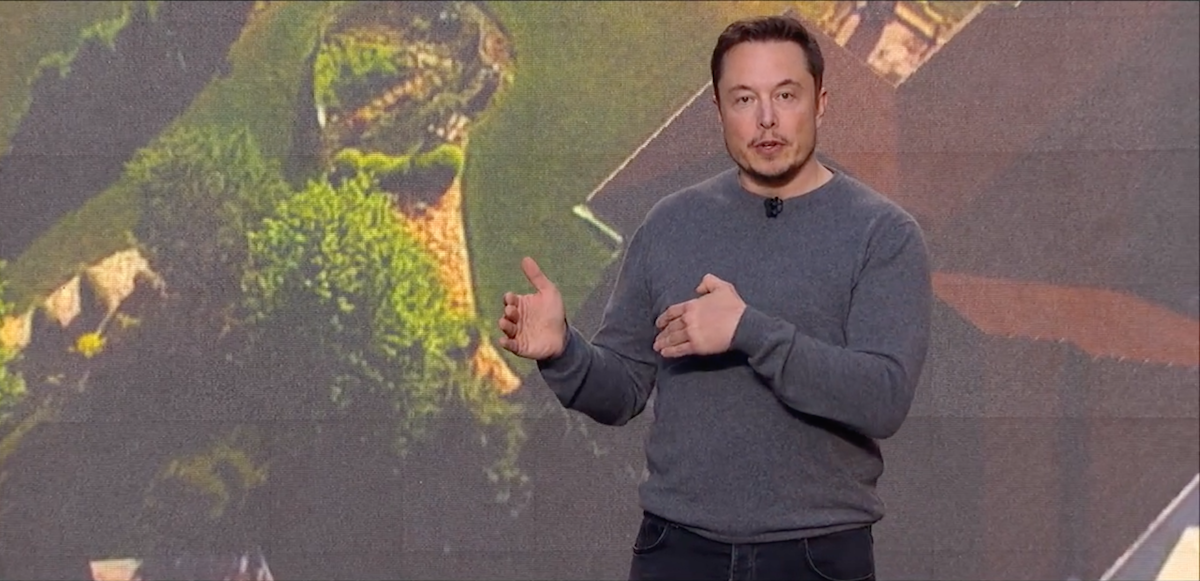Tesla is trying to make solar sexy.
CEO Elon Musk unveiled its much-hyped solar roof products last Friday, and to give proper credit, they look great. Tesla will offer four types of shingles to match different housing aesthetics in an effort to get homeowners to ditch clunky solar panel add-ons in favor of a beautiful roof. (Although Musk will be quick to add traditional panel installation is still an option if you’re not in the new roof market.)
Musk’s roof unveiling, which also included the introduction of its new at-home battery option Powerwall 2.0, is part of Tesla’s effort to show what will come if a merger with SolarCity is granted. Shareholders will vote on the merger, worth $2.6 billion, on November 17.
We took a closer look at Musk’s solar roof that will incorporate use glass developed by Tesla’s new glass division. Here’s everything we know about the four solar roof options:
Musk installed its new solar roof offerings on houses on Universal Studio's famous backlot, which creates a suburban environment.

The first product offering Musk showed was its textured glass tiles.

See how it shimmers?

Tesla tucked the solar cells behind the glass...

... And in doing so, you can't really tell the roof has solar cells. That's really the whole crux of Tesla's solar roof vision: to create something that's both aesthetically appealing and efficient.

Musk has been emphasizing the importance of competing on an aesthetic level when it comes to the new solar product offering.

"First of all, I’ve never seen a solar roof that I would actually want… they're weird," Musk said on a conference call Tuesday night. "Every one of them that I’ve seen is worse than a normal roof, without exception. So unless you’re going to beat a roof on aesthetics, why bother?"

Musk seemed most excited about Tesla's French slate tile offering, saying the style is "one of the hardest things to do." This photo gives you a nice look at the solar cell hidden in the tile.

"My roof is a French slate roof, that’s one of the tile styles I wanted to do," Musk said on Tuesday's conference call. "And we were able to get that. Super hard.”

Musk said at the event that each French slate tile was made using a process known as hydrographic coloring, a process that uses water to apply printed designs.

"The production process itself makes each tile specially unique, it’s sort of a special snowflake tile," Musk said.

Tesla's hydrographic process is being overseen by a brand new Tesla glass tech division, Musk said on Tuesday's call. He said the process is "using a lot of techniques from the automotive glass business."

You can read more about Tesla's new glass division here.
There's still no details on how much these tiles could cost, but SolarCity CEO Lyndon Rive said on Tuesday's call that "we think we can get to that price point of 40 cents a Watt over time in large scale" for the solar cells, which would put it in line with the competition.
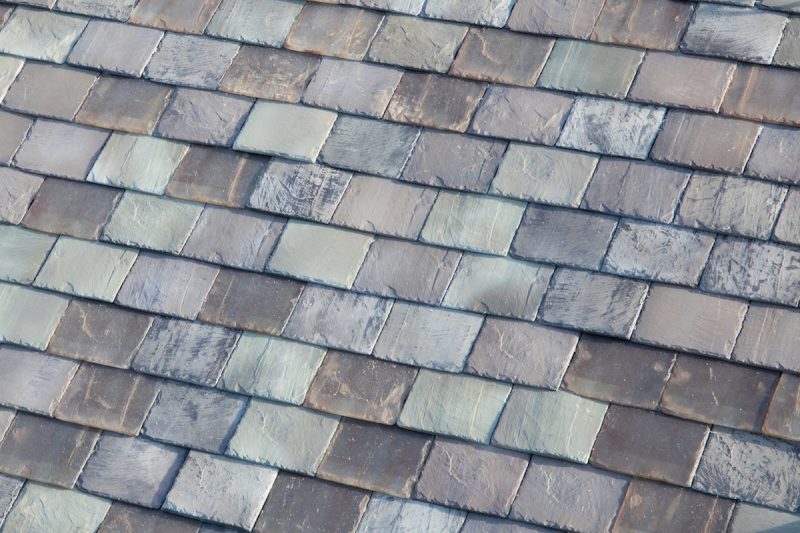
"We’ll have the best cell at the lowest price. Just as we have the best battery cell at the lowest price," Musk said on Tuesday's call. "We have the highest energy density cell at the lowest price."

Rive said on Tuesday's call that the solar roof would most likely not fall under a lease or power purchase agreement, but instead as a straightforward loan. "In that case, there is no asset ownership challenge. We would just transfer the ownership to the new homeowner," he said.
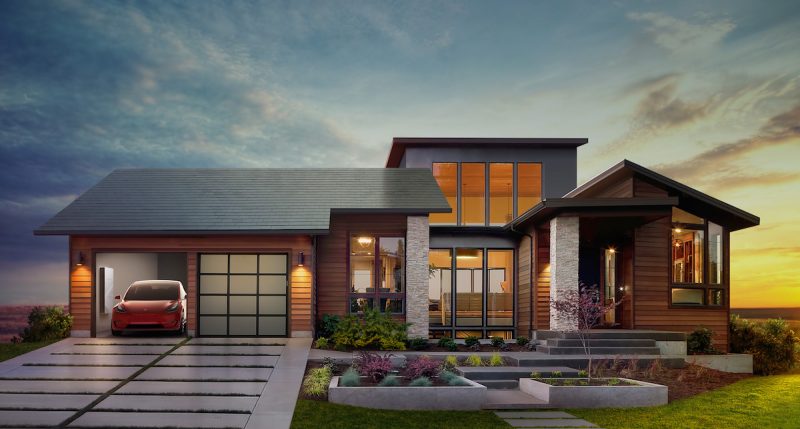
Tesla's smooth glass tile is meant to offer "more of a modern look," Musk said at the event.
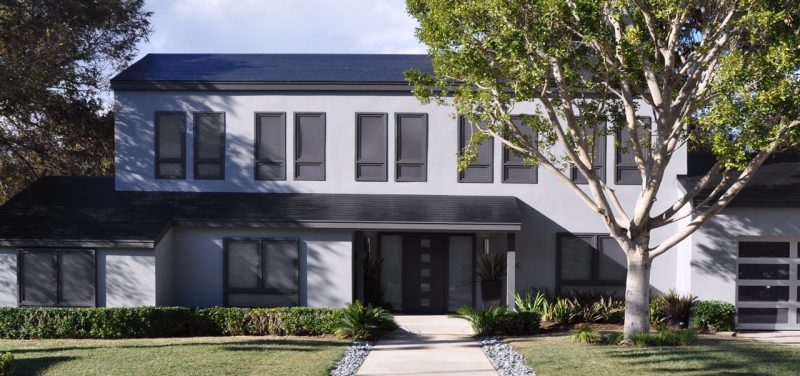
Unlike the textured glass tile and French slate offering, the smooth glass tile seen here was purposefully designed so you could see the solar cells from certain angles.

"From the vantage point of the street or anywhere near the house it looks completely opaque, but to the sun it’s transparent," Musk said. Although, it's hard to imagine why a feature you can only see from an aerial vantage point would be a huge selling point.

Lastly, Tesla's Tuscan glass tile offering. The roof shown at the event wasn't exclusively made up of Tesla's Tuscan tile. Instead, only the darker tiles seen here come with the solar cells.

Like the smooth glass tile, Musk made a point of showing how looking at the Tuscan tile from different angles will determine whether you can see the solar cell.

Here's a better shot of how the Tuscan glass tiles look once they're installed.

Musk also made a point of showing the durability of Tesla's glass tiles with a weight taste. He also wrote in a tweet last Friday that you can walk on the tiles like you would with regular asphalt shingles.
Musk also tweeted that the solar glass tiles can incorporate heating elements to clear snow while generating energy. He said it wouldn't be energy intensive to melt the snow, but "strongly net positive" in a Friday tweet.
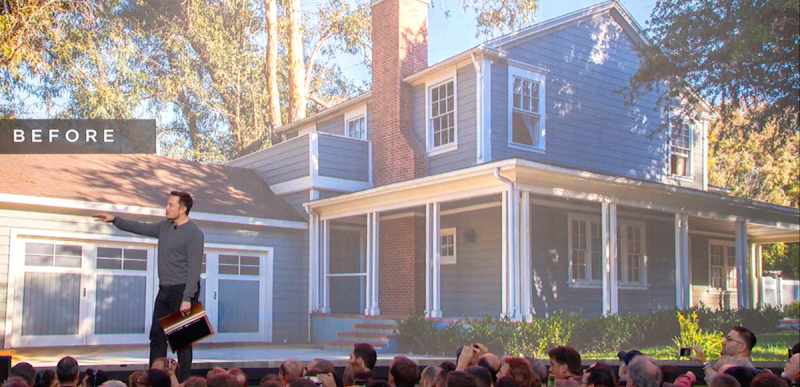
If Tesla's merger with SolarCity is granted, the solar cells will be produced at a plant in Buffalo, New York.
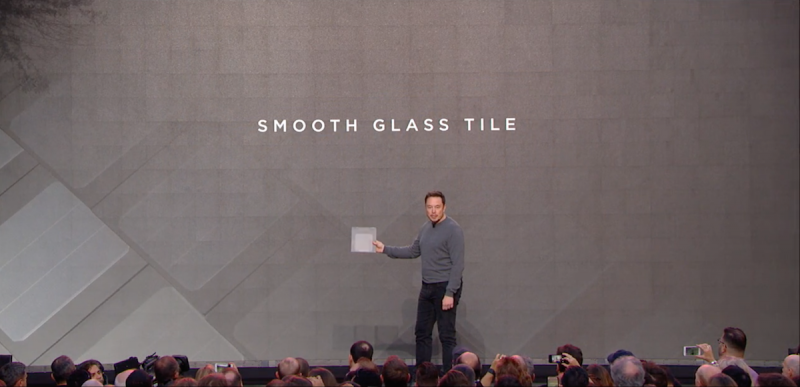
Tesla and Panasonic have pledged to produce solar cells at the Buffalo manufacturing facility on the condition the SolarCity merger passes.
The Buffalo plant Tesla has chosen was originally meant to be a production facility for SolarCity and is scheduled to begin production at the end of 2017. You can read more about the Buffalo plant here.
Musk's solar roof product is one of several energy products Tesla would offer if the SolarCity merger is granted.

Tesla would offer traditional solar panel installation, the solar roof, and Powerwall 2.0 as a combined company with SolarCity.
Tesla wrote in a blog post Tuesday that it expects SolarCity to add more than half a billion dollars in cash to Tesla's balance sheet over the next three years and "to contribute $1+ billion in revenue in 2017."
Tesla's proposed SolarCity merger has been met with criticism.
Tesla has a lot to contend with in 2017 as it ramps up production for the Model 3, and would be adding SolarCity's almost $3 billion in debt to its balance sheet. Musk is the largest shareholder in both companies and is also the cousin of SolarCity's Rive.
SolarCity hasn't had a great year, either. The company is burning through cash, and its shares have plummeted more than 50% since the beginning of the year. SolarCity has also cut its marketing costs and laid off members of its sales and marketing team.
Shareholders will vote on the merger on November 17.

